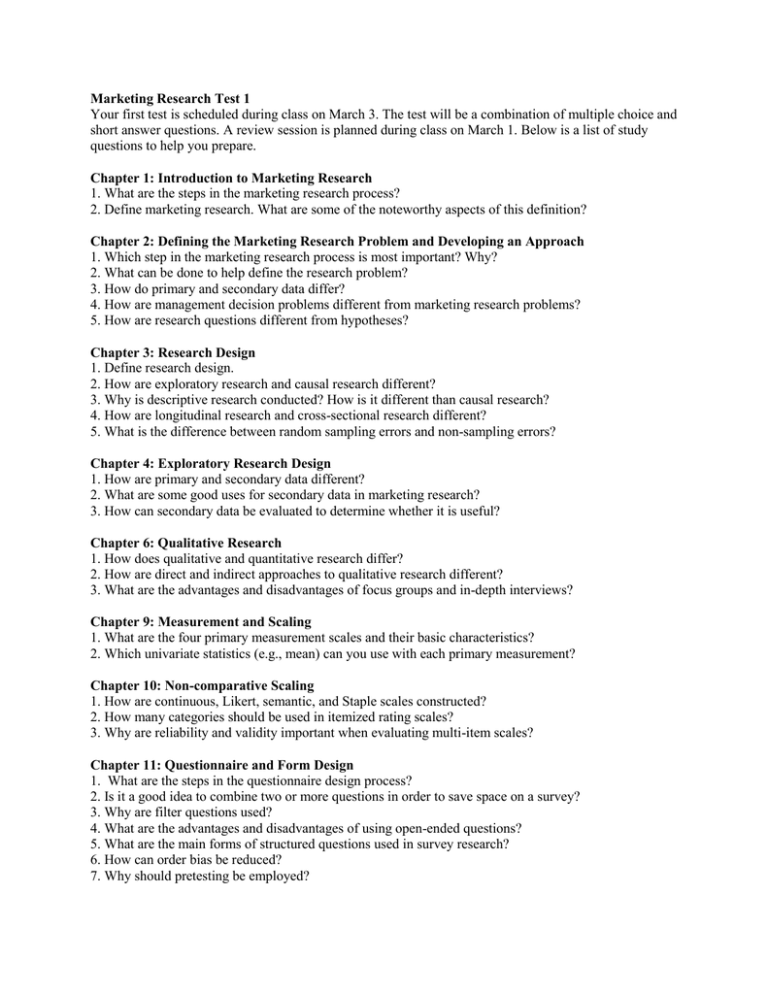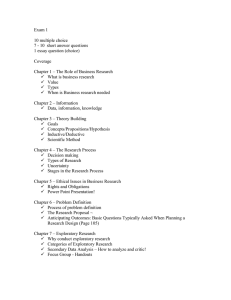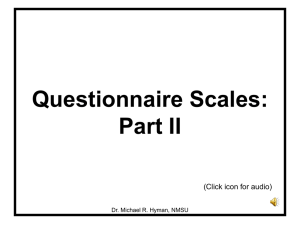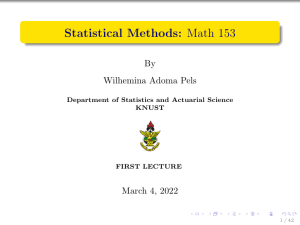T1 Review
advertisement

Marketing Research Test 1 Your first test is scheduled during class on March 3. The test will be a combination of multiple choice and short answer questions. A review session is planned during class on March 1. Below is a list of study questions to help you prepare. Chapter 1: Introduction to Marketing Research 1. What are the steps in the marketing research process? 2. Define marketing research. What are some of the noteworthy aspects of this definition? Chapter 2: Defining the Marketing Research Problem and Developing an Approach 1. Which step in the marketing research process is most important? Why? 2. What can be done to help define the research problem? 3. How do primary and secondary data differ? 4. How are management decision problems different from marketing research problems? 5. How are research questions different from hypotheses? Chapter 3: Research Design 1. Define research design. 2. How are exploratory research and causal research different? 3. Why is descriptive research conducted? How is it different than causal research? 4. How are longitudinal research and cross-sectional research different? 5. What is the difference between random sampling errors and non-sampling errors? Chapter 4: Exploratory Research Design 1. How are primary and secondary data different? 2. What are some good uses for secondary data in marketing research? 3. How can secondary data be evaluated to determine whether it is useful? Chapter 6: Qualitative Research 1. How does qualitative and quantitative research differ? 2. How are direct and indirect approaches to qualitative research different? 3. What are the advantages and disadvantages of focus groups and in-depth interviews? Chapter 9: Measurement and Scaling 1. What are the four primary measurement scales and their basic characteristics? 2. Which univariate statistics (e.g., mean) can you use with each primary measurement? Chapter 10: Non-comparative Scaling 1. How are continuous, Likert, semantic, and Staple scales constructed? 2. How many categories should be used in itemized rating scales? 3. Why are reliability and validity important when evaluating multi-item scales? Chapter 11: Questionnaire and Form Design 1. What are the steps in the questionnaire design process? 2. Is it a good idea to combine two or more questions in order to save space on a survey? 3. Why are filter questions used? 4. What are the advantages and disadvantages of using open-ended questions? 5. What are the main forms of structured questions used in survey research? 6. How can order bias be reduced? 7. Why should pretesting be employed?











